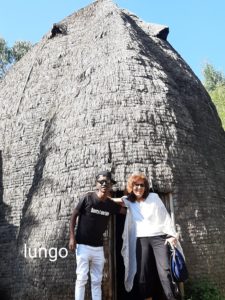
The inhabitants of this village are known as the Dorze, one of the many small segments of the great Omotic language group of southern Ethiopia. Once warriors, they have now turned to farming and weaving to earn a living. Their success in the field of weaving has been phenomenal and the Dorze name is synonymous with the best in woven cotton cloth. Chencha, in fact, is famous for the fine cotton gabbis or shawls that can be bought there.

Each amazing Dorze bamboo house has its own small garden surrounded by enset (false banana plantation), beds of spices and cabbage, and tobacco (the Dorze are passionate smokers). The main house is a tall-up to twelve meters bee-hived shaped building with an aristocratic ‘nose’, which forms a reception room for guests and is usually furnished with two benches. The vaulted ceiling and walls of the spacious and airy houses are covered with an elegant thatch of enset to form a smooth and steep unbroken dome.

When a Dorze house starts to rot or gets eaten by termites, the house is dug up. Bamboo is sewn round it to keep it in shape, and everyone rushes to help carry it. With poles poked horizontally through the building, men, women, and children all join in the effort-with a fine complement of singing- to move it its new site. A house lasts for about forty years and is then abandoned.

